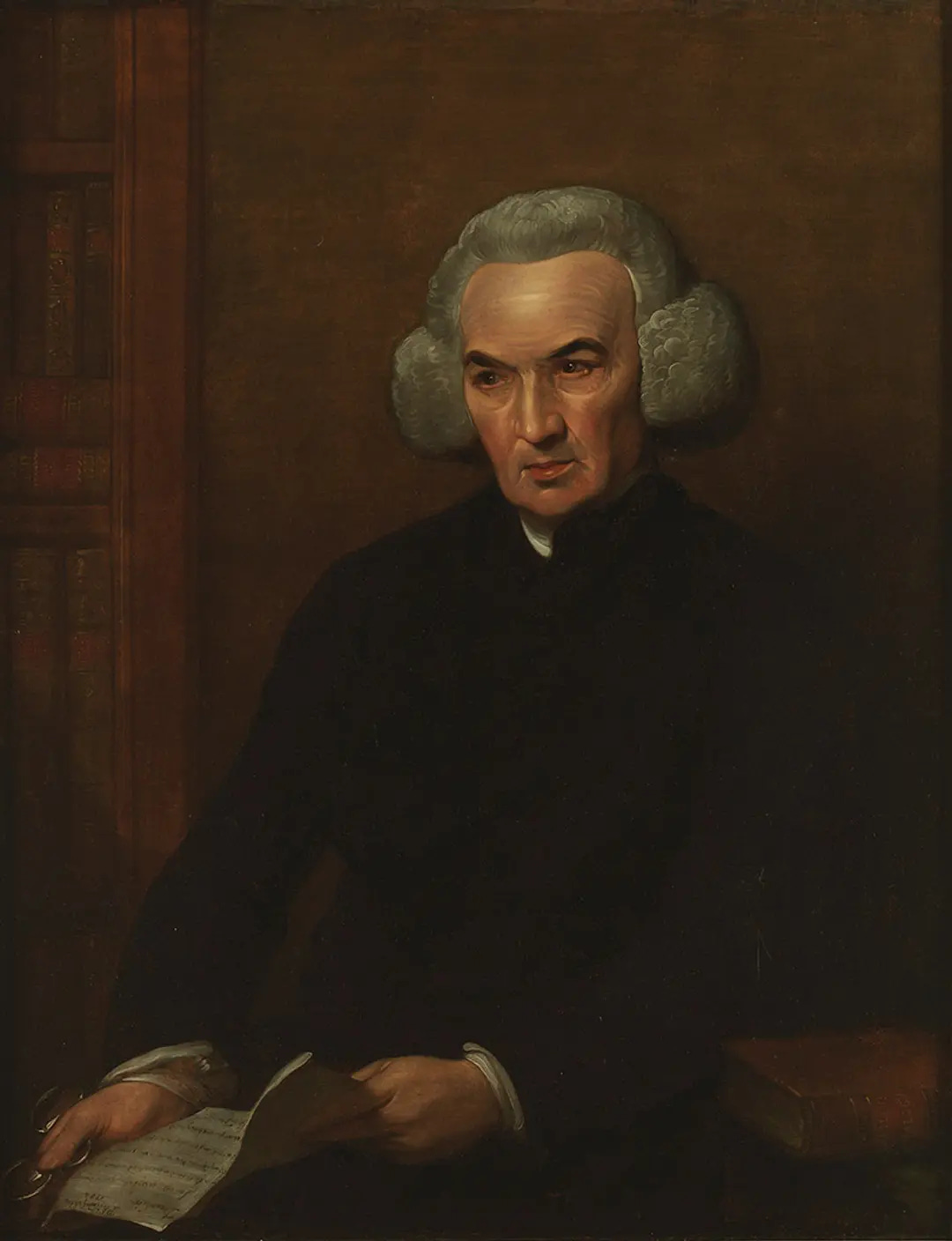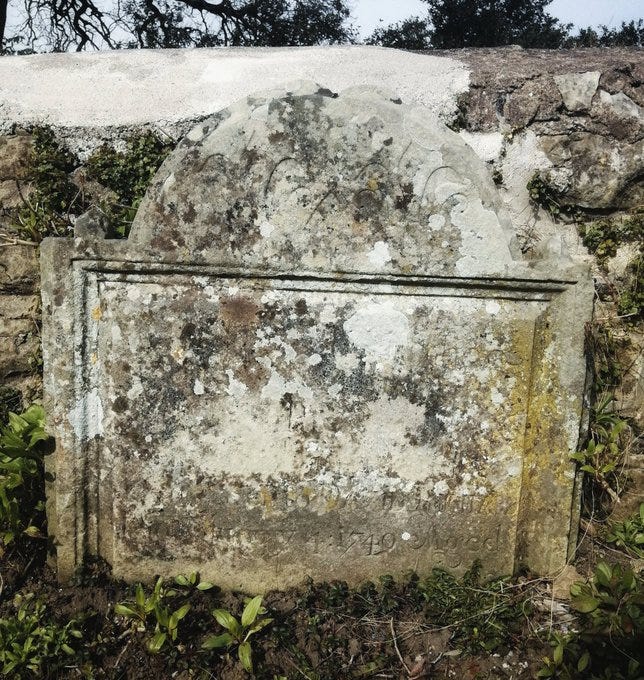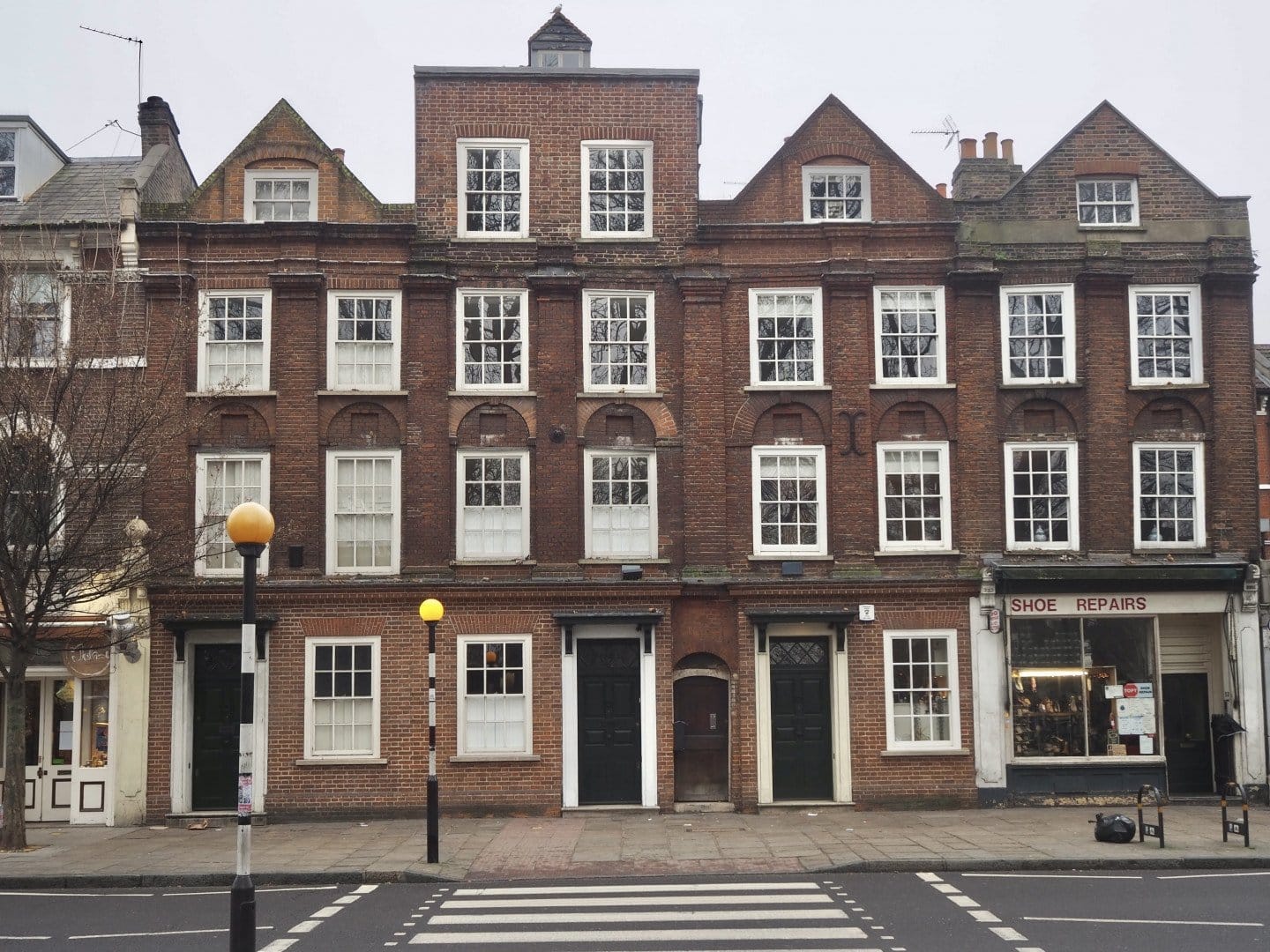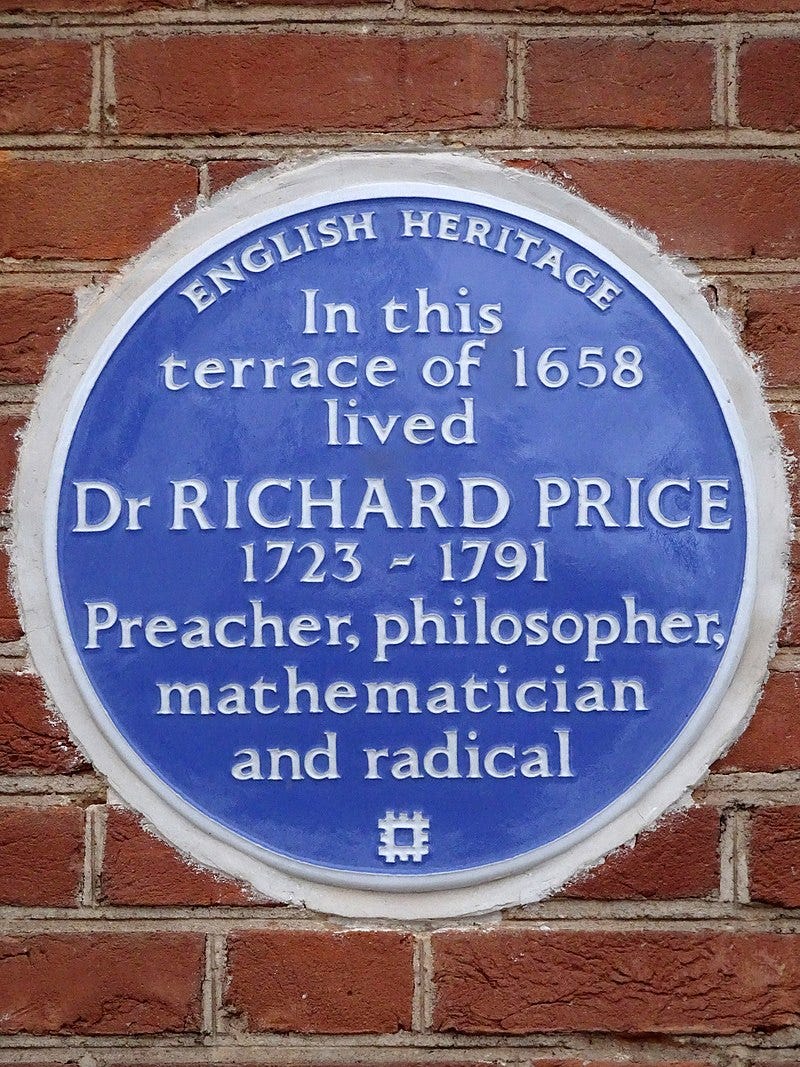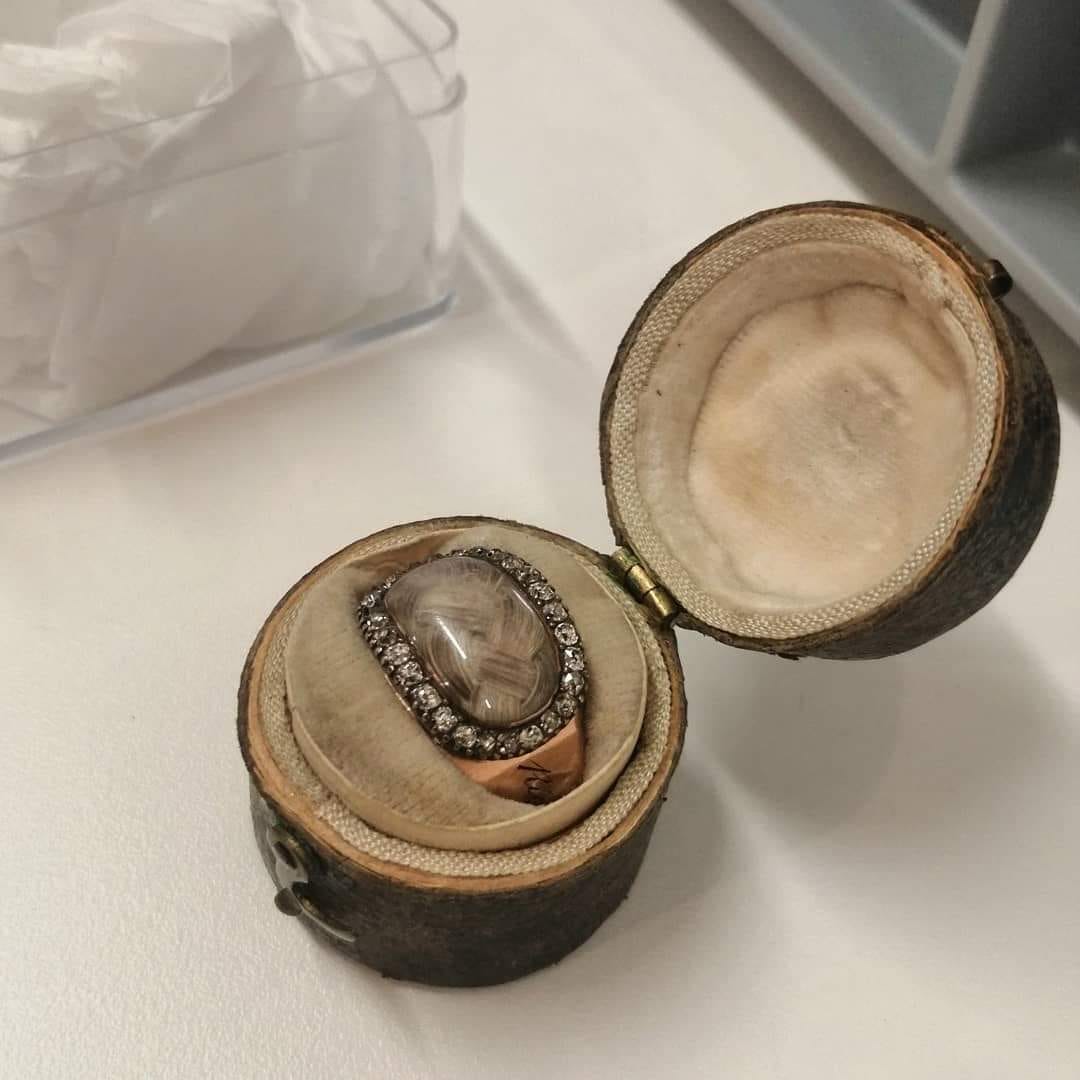A Friend of Liberty | Rev Dr Richard Price
Richard Price was born at Tynton, Llangenior on the 23rd of February 1723. He was the son of Rice Price and his second wife Catherine Richards. Catherine Richards was the daughter of Dr David Richards of Oldcastle. Caroline Williams described her as “a very beautiful and delightful woman.”
In his father's eyes, Richard was destined to become a merchant but from a young age Richard had shown more interest in books and this was encouraged by his tutors. There is a story about an instance when Rice found his son reading the sermons of Dr Samuel Clarke and while in a rage flung the book into the fire.
Due to his father’s connections, Richard was able to benefit from the very best education that Welsh Dissenting Academies had to offer. He attended a school at Neath and another at Llanon, Carmarthen. By 1738, Richard was attending Vavasor Griffiths Academy, Talgarth.
In June 1739, while Richard was studying at Talgarth Academy, his father Rice Price died suddenly at Tynton Farm. Richard then aged 16, was left the sum of £400 which he quickly gave to his two sisters and his mother. Following Rice’s death, Richard’s mother and sisters left Tynton Farm and moved to “an old house at Bridgend on the banks of the river.”
Although life had become difficult, Richard was able to continue his education at the academy in Talgarth for another year. Tradition notes that he walked from Talgarth to Bridgend to visit his mother and even did so during the severe snow of 1740 – By that time his mother Catherine was gravely ill.
On the 4th of June 1740, Catherine died at Bridgend, aged 47. She only survived her husband for one year. Catherine was buried at St. Mary's Church, Nolton.
The months following the death of his mother were a great time of difficulty for Richard. After seeking advice from his uncle, Samuel Price (who was the co-pastor to Dr Isaac Watts in London) Richard decided to join his uncle in London.
The journey to London itself was one of great difficulty as Richard had no means to get there. Richard’s half-brother came to his aid by loaning him a horse to ride for the first twenty miles of the journey.
“Dick, your situation gives you some claim to my assistance; my horse is at your service for the first twenty miles of your journey.” - John Price
From Cardiff, Richard proceeded on foot and perhaps getting a lift in a passing wagon from time to time. Richard recalled that he was aided on a part of his journey by a lady who observed him walking and gave him a seat inside her carriage.
Within days of reaching London, Richard was admitted as a student to the Academy founded by William Coward, which was situated in Tenter Alley, Moorfields.
As a result of his uncle's generosity, Richard was able to take lodging above a barber's shop in Pudding Lane. This is where he met his future wife, Sarah. He continued his studies here from 1740 – 1744, taking a brief sabbatical during 1741 owing to the “thick air of the city” resulting in the deterioration of his health.
Flourishing in his studies, like his uncle before him, Richard became a Dissenting Minister, He preached at Edmonton and in 1744 became chaplain to one of the most wealthy members of his congregation, George Streatfield. For the next twelve years, Richard lived with Mr. Streatfield and devoted himself to his ministerial duties.
Following the death of Mr Streatfield in 1756, Richard inherited a “handsome” legacy. Later that year, Richard’s uncle, Samuel, died at the age of 80 and left Richard a house in Leadenhall Street.
The death of these two men gave Richard the financial stability to marry his love, Sarah Blundell. Richard and Sarah married at St Mary’s Church, Stoke Newington, on the 16th of June 1757. Richard recalled that “He fell in love with her at first sight, and his affection for her never failed.”
Described complete opposites, Sarah was a staunch churchwoman with a fondness for playing cards in the evening. Richard on the other hand, never played cards and preferred to ride his horse for a few hours before dinner.
"He was greatly attached to the old white horse which carried him for fourteen years. It had once been a hunter, but having lost an eye by the lash of a whip, was consigned to a better service, and presented by a friend to the Doctor.” - Mr Rogers.
A few years into their marriage, Sarah became seriously ill and became “very delicate.” Richard did all he could to look after his wife, William Morgan recalled“Nothing could exceed the devotion of her husband to her.”
He and Sarah visited Wales every year. Staying at the family cottage on the Southerdown Coast, where Richard had spent summers climbing the cliffs and swimming in the sea. They always visited Richard’s family in Bridgend, they were very close with his siblings and did all they could to support their nieces and nephews.
Richard and his wife Sarah moved to 54 Newington Green, where he became the minister of the local Dissenting Chapel. The house that Richard and Sarah resided in was built in 1658 and is now part of the oldest surviving block of brick-terraced houses in London.
While at Newington Green, Richard became friendly with many well-known men of science and mathematics. In 1758, Richard published his first of many works: ‘A Review of the Principal Questions and Difficulties in Morals'.
He had a passion for these subjects from a very young age and was now surrounded by like-minded people. Richard became acquainted with “the highest of intellectual society.” Richard became involved with Lord Shelbourne and became a member of the ‘Bowood Circle’ and later became a member of the ‘Club of Honest Whigs.’
Notable associates of his included: Benjamin Franklin, John Adams, Thomas Jefferson, Thomas Paine, Earl of Stanthorpe, William Pitt, David Hume and Samuel Rodgers.
In 1761 Richard was elected a member of ‘Mr William's Trust’ which enabled him and his ministry to be recognised. Following the death of Thomas Bayes died and his papers came into the possession of Richard Price. He quickly realised the importance of these papers and prepared and submitted them to the Royal Society in 1763.
On the 5th of December 1765, Richard was elected a Fellow of the Royal Society. He was awarded the degree of Doctor of Divinity from The Marischal College, Aberdeen on the 7th of August 1767. In 1770 Richard became the morning preacher at Gravel Pit Chape and began to carry out various duties in Old Jewry Street, London.
'Observations on Reversionary Payments' was published by Dr Richard in 1771 and is said to have “laid the basis for the whole principle of life assurance worldwide.” The following year he published 'An Appeal to the Public on the Subject of the National Debt' which heavily influenced William Pitt and his economic policies.
‘Observations on the Nature of Civil Liberty, the Principles of Government, and the Justice and Policy of the War with America' was published in February of 1776. It sold 60,000 copies in the first year of its publication. Richard considered this publication"one of the best actions of his life". This publication secured Richard the ‘Freedom of the City of London’ and the gold casket to the value of £50.
The pamphlet was translated into several European languages. The translations of the first pamphlet led to Richard being acquainted with such people as Turgot, Necker and Condorcet of France. In later life, Richard advised and supported the French Revolution and its fight for liberty.
In 1778 'Two Tracts on Civil Liberty' was published. The pamphlet contained forecasts and ideas regarding the European Federation and the United Nations. As a show of appreciation, Congress gave Richard the honorary citizenship of the United States. They went on to request his assistance in regulating their finances, but Richard declined due to his advancing age. He did however accept an honorary doctorate of Law from The University of Yale. The doctorate has only been given to two people: Richard Price & George Washington.
“His inexpressible anguish at this separation after thirty years of uninterrupted happiness." - Mrs Morgan.
By 1786 Sarah was in a state of weakness from repeated attacks of palsy, and Richard felt her illness to be, as he expressed it, "the greatest affliction he had ever met with."
Sarah died on the 20th of September 1786 and was buried alongside Richard’s uncle at Bunhill Fields Burial Ground. Although Sarah’s death had been somewhat expected, Richard was heartbroken. Caroline Williams recalled “he could never, without great agitation, enter the place of his wife's interment.”
In the weeks following her death, Richard went to stay with their nephew at Sydenham. That time in his life distressed Richard so much that after leaving Sydenham, he never returned there.
In 1787 Richard left his Newington Green residence which had been his marital home for nearly thirty years. Hoping that a change of scenery might distract his thoughts of grief, he moved closer to his congregation and took up residence at St Thomas Square in Hackney. His recently widowed sister, Mrs Morgan, joined him at Hackney and took it upon herself to manage Richard's household.
He was a keen supporter of the French Revolution and used every opportunity he could to express his support for the cause. On the 4th of November 1789, Richard preached his last controversial sermon ‘A Discourse on the Love of our Country’ at Old Jewry.
In this sermon, Richard presented his views on the “dawning of the millennium through the spread of liberty and happiness over the world.” He spoke about this regarding the then-current developments in France. The sermon was published as a pamphlet and went through edition after edition in London, Boston, Dublin and Paris.
The appendix of the published sermon included letters of thanks from French patriotic bodies which all “exclaimed the fullest sentiments of liberty.” The sermon became the target of Burke's political pamphlet entitled “Reflections on the Revolution in France” published in 1790. The pamphlet was later described as “torrents of abuse” against Richard.
On the 14th of July 1790, a dinner was held at the Crown and Anchor Tavern in the Strandto to celebrate the first anniversary of the Revolution. Guests at this dinner were known as 'Friends of Liberty' and the 'Friends of the Revolution in France'. During the dinner, Richard was presented with a French Tri-colour for his commitment to the liberty of France.
"Disorders of his body, however much they might have depressed his spirits, never had the least effect in impairing the faculties of his mind." - William Morgan F.R.S
In later life, Richard lost his sense of smell and owing to constant pain in his back and legs he was unable to enjoy his much-loved recreational activities which included a few hours of horse riding every day before dinner.
In the summer of 1790, the now 67-year-old Richard took his annual holiday to South Wales. He spent two months at his cottage at Sealawns and visiting his relatives at Bridgend. When he returned to London in October, he began to write his memoirs.
In February 1791, Richard became ever more fragile and a few weeks later he was seized with a bladder complaint which left him bed-bound for the last month of his life. Richard died a few minutes before three o'clock on the morning of the 19th of April 1791.
On the 26th of April 1791, Rev Dr Richard Price D.D F.R.S was buried alongside his wife Sarah and his uncle at Bunhill Fields Burial Ground. The funeral service was performed by his close friend Dr Kippis. Richard had requested a small funeral but that was not meant to be. The funeral procession consisted of “twenty mourning coaches of his family and friends and a train of thirty gentlemen's carriages”. The funeral sermon was given at Gravel Pit by Dr Joseph Priestly on the 1st of May.
Following his death, locks of Richard’s hair and locks of Benjamin Franklin’s hair were taken and woven into part of a mourning ring. The ring is made of gold and encrusted with diamonds.
The inscription reads:
'Benjamin Franklin died 17 April 1790.'
'Rich'd Price D.D. Died 19 April 1791.'





